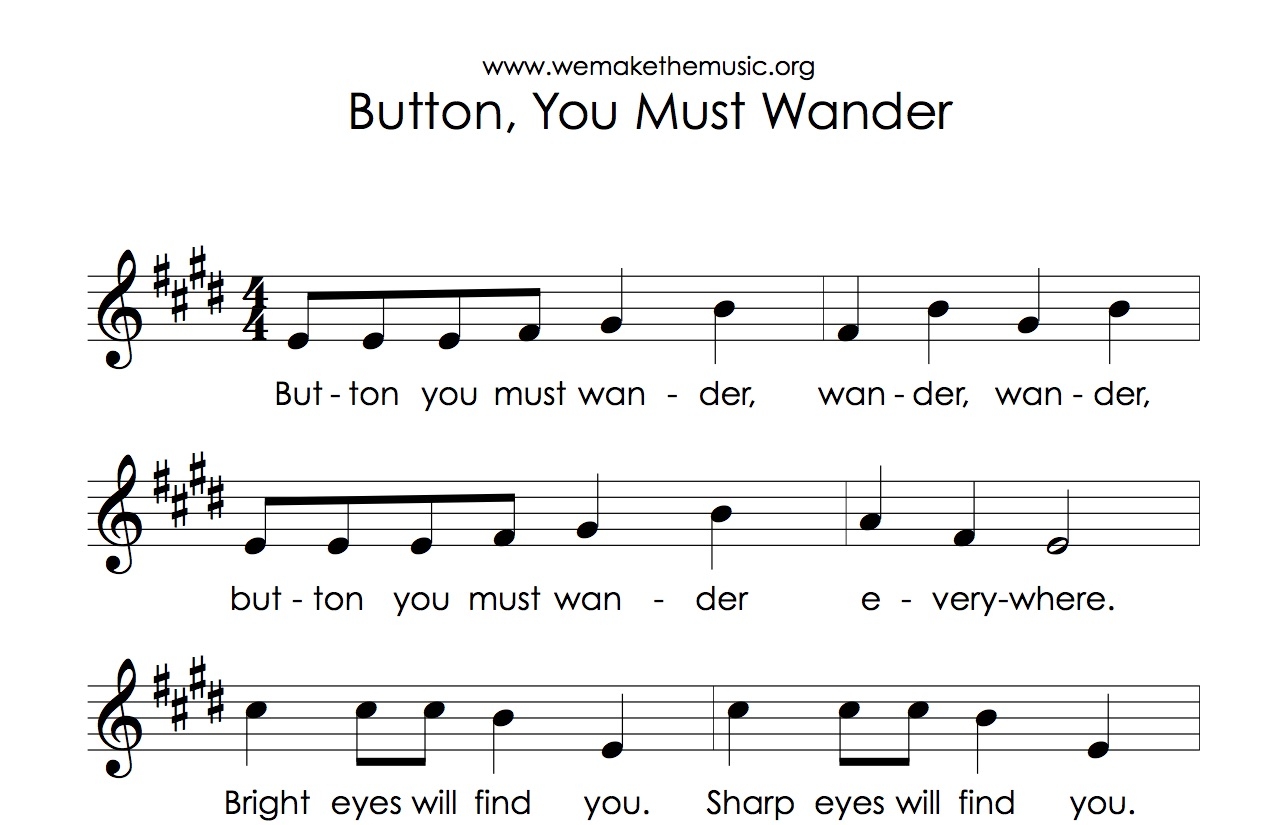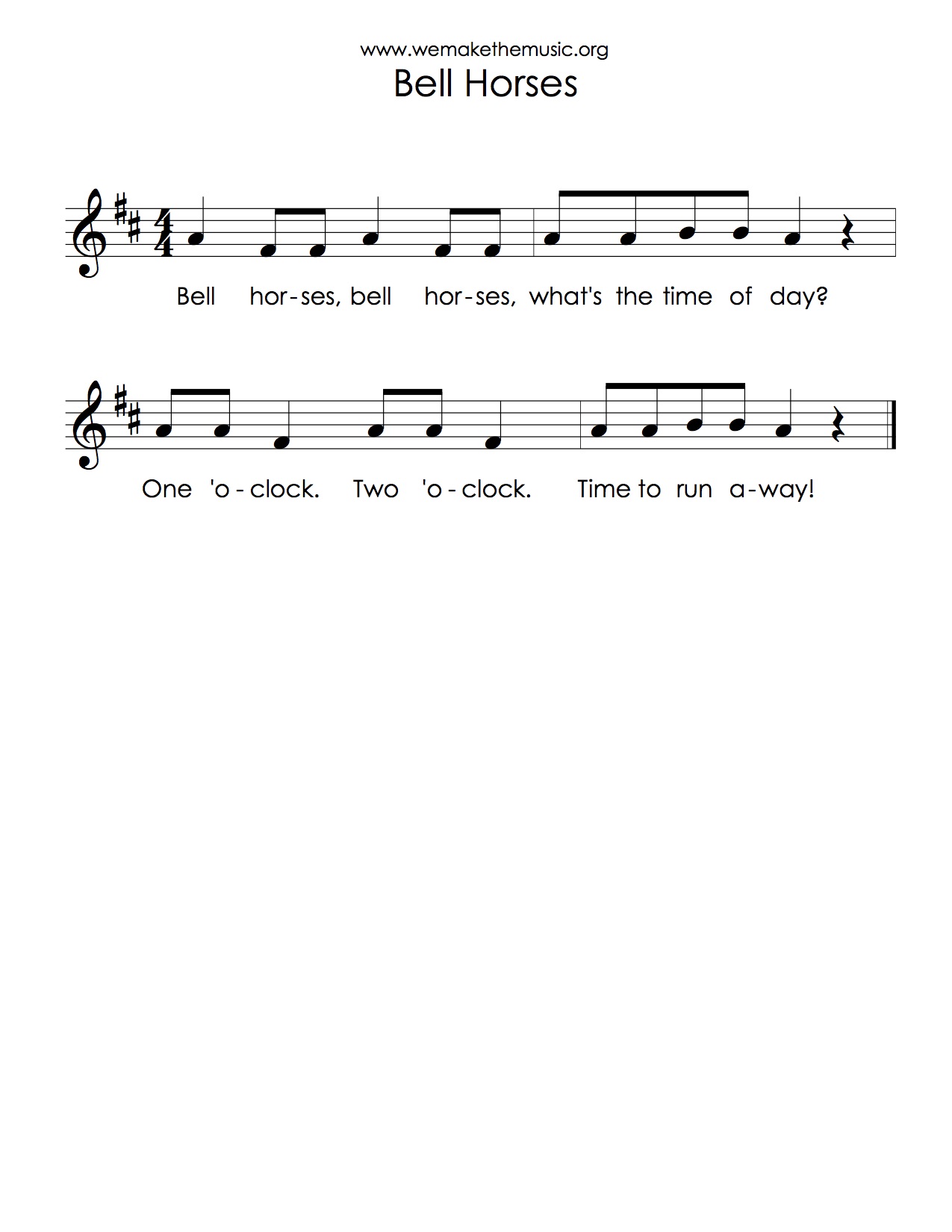Choosing songs to teach from in the music room can be tricky business.
For one thing, there are an infinite number of songs from which to choose. You can easily put your head down to think of one song to use in a lesson only to look up hours later with stacks of books and binders next to you, not to mention tabs on tabs of teaching websites on your laptop. (I know, because I've done it.)
With that in mind, I thought I'd share with you my favorite collection of songs to teach rhythm vs beat. This particular collection works very well for me and I think you'll enjoy it too! I'll also share other great ideas for these songs and rhymes beyond rhythm and beat.
Let's jump in!





1. Burnie Bee
Fun fact about this song: a Burnie Bee is actually another name for a ladybug!
2. Engine Engine
Have students walk around in a circle with you, imitating train motions and walking in a steady beat. Each time you speak the rhyme increase the tempo to make the train go faster. The last time through, speak the rhyme slowly as the train pulls into the station.
This keeps students engaged as they prepare rhythm and beat - they don't even realize they're repeating the song over and over and over (and over and over. . . . .).
Another popular version of the song is
Engine, engine number nine,
going down Chicago line
See it sparkle, see it shine,
Engine, engine, number nine.
Other Musical Uses:
More Ways to Use Engine Engine:
3. Bell Horses
This song is great to use for keeping a steady beat with jingle bells. If you have a class set, pass them out and let the students play while they sing.
If not, have the students sit in a circle and choose a few students at a time to be the "bell horses". They can prance around the circle and then choose new horses to take their place. So fun!
Other Musical Uses:
La
Movement in free space
Read More Uses for Bell Horses Here:
4. Queen Queen Caroline
Queen Caroline was the wife of King George II. This is a funny rhyme about hygiene - washing hair with oil certainly is an odd thing to do and kids like to hear about how different life was back in the 1700's.
Other Musical Uses:
Quarter and eighth notes
Composition
5. Button You Must Wander
For this game, have students sit in a circle. One student sits in the middle with his or her eyes closed while the teacher hands a small button to someone in the circle. As the class sings the song, the button gets passed around in a steady beat. When the song is over, all students put their hands in their laps and the student in the middle tries to guess who has the button.
Other Musical Uses:
Do Re Mi
Quarter Notes, Eighth Notes
Quarter Rest
Why I Like this Collection:
This group of songs makes a nice collection for teaching the difference between rhythm and beat.
Rhythmic Variety: Each of the opening lines of these songs uses a different grouping of ta and ta-di. Since the opening phrases are all unique it makes it simple to play an aural discrimination game during the preparation or practice phase of teaching. (The teacher can clap the rhythm and students guess the "mystery song".)
Mix of song types: This particular collection has a nice mix of singing, spoken rhymes, action songs, games, and even a lullaby. It makes for a nice range of options when lesson planning.
Double Dip: These songs can be used for teaching more than one concept, such as speaking voice vs singing voice. You can also pull them out when you teach your students quarter and eighth notes.
If you're looking for more tracking printables for rhythm vs beat, check out these! There are 112 pages of rhythm vs beat printables for you to use in your classroom.
Happy printing. Happy teaching.







































